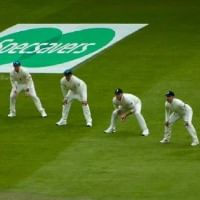The Royal Challengers Bengaluru (RCB) put on a masterclass to register one of their most important wins in their history. Immaculate in planning and flawless in execution, the Rajat Patidar-led side made the Chennai Super Kings (CSK) feel like aliens in familiar conditions, something which only a few teams in the Indian Premier League (IPL) have been able to do.
The three-time finalists, after being put into bat first, showed that modernity had a bigger say than traditionalism under the circumstances on offer. RCB never took their foot off the pedal and raced their way to 196-7 as CSK spinners were nearly toothless.
The RCB bowlers backed up the batters' display with an impressive display. At no stage were CSK in the run chase, as they could only manage 146-8. With two successive wins over two IPL heavyweights (KKR and CSK), that too away from home, RCB's new era has made a massive statement.
On that note, let us look at three key factors behind RCB's huge win vs CSK in IPL 2025.
3 key factors behind RCB's huge win vs CSK in IPL 2025
#1 Josh Hazlewood's new-ball spell
Josh Hazlewood might be the last person you associate with the Chepauk. His attributes of extracting bounce, sticking to traditional areas, and getting the new ball to move a bit off the seam are valued everywhere, but arguably not much in Chennai, where spinners almost always hog the limelight.
But, against CSK, he stole all of the attention before the spinners even came into the picture. Hazlewood was able to trouble the CSK batters with some steep bounce, making them uncomfortable, as if the required rate was not enough. He struck twice in his first over, dismissing Rahul Tripathi and Ruturaj Gaikwad without trying anything out of the ordinary.
In his two-year stint with CSK, he never played at the iconic venue, and his recent outing for RCB marked the first time that he bowled there in the IPL. Whereas in national colors, he played a solitary ODI in 2023, registering figures of 3-38, which was a foreshadowing of sorts, albeit the massive gap between the two performances.
Credit also goes to the rest of the pace bowling unit. Bhuvneshwar Kumar and Yash Dayal also had a massive say in the proceedings. The former complemented Josh Hazlewood brilliantly with the new ball, while Yash Dayal showed that he is effective even if he does not have the new ball in his hand.
#2 A modern-day T20 scorecard
RCB were adamant about creating a squad capable of playing according to the modern approach employed by most teams. It was more evident against CSK than it was against KKR, as RCB lost seven wickets while scoring 196, with the highest score being 51 (Rajat Patidar). Only one batter played more than 30 deliveries in the innings.
Furthermore, the average strike rate of batters who played at least 10 deliveries was a whopping 163.98. Trusting their depth, the batters right from the top had the freedom to go hard. Phil Salt utilized the powerplay to the best, Devdutt Padikkal used his match-up against the left-arm spinners, Patidar lived up to his reputation as a spin basher, while Tim David applied the ideal finishing touch.
In many ways, it was the near-ideal template on how to construct a T20 innings because it was not entirely blind slogging, but something calculative. Virat Kohli's innings (31 off 30) might come across as a blip on the scorecard. But, since the scoring never stopped from the other end, and Kohli perished before his innings proved to be counterproductive, it did not negatively impact RCB in any way.
#3 Capitalizing on the key tactical slip-ups by CSK
It was a rare sight to see CSK a couple of steps behind the opponent and struggling to catch up at Chepauk. RCB, to their credit, made sure those blunders were punished to the maximum.
For instance, R Ashwin bowling to Phil Salt with the field up in the powerplay was the first huge mistake. The English batter has a strike rate of 152.51 against spin during fielding restrictions in T20s, and had been troubled a bit by Khaleel Ahmed in the previous over.
The veteran spinner's carrom ball execution was far from ideal, making it easy for the explosive opener to work his magic. Ashwin fared much better in the middle overs, dismissing Padikkal while at it. But he could not bowl beyond two overs against RCB's right-handed dominant middle order.
Similarly, although the seventh over is more or less reserved for Ravindra Jadeja as it marks the end of the feeding restrictions, throwing him up against Devdutt Padikkal up front was another mistake. The left-handed batter, who has a strike rate of 141.8 against left-arm spin, scored 15 runs off Jadeja's first over, scoring three boundaries.
That huge over set the tempo for RCB in the middle overs. On the other hand, it ruined all of CSK's hard work in the latter half of the powerplay, where they looked to pull things back after Salt's assault.
Get real-time updates on IPL 2025, live scores, IPL Prediction, match schedule, points table,Result & squad -CSK, MI, RCB, KKR, SRH, LSG, DC, GT, PBKS
